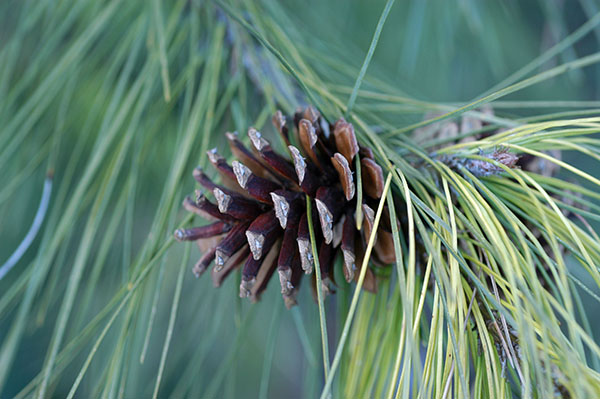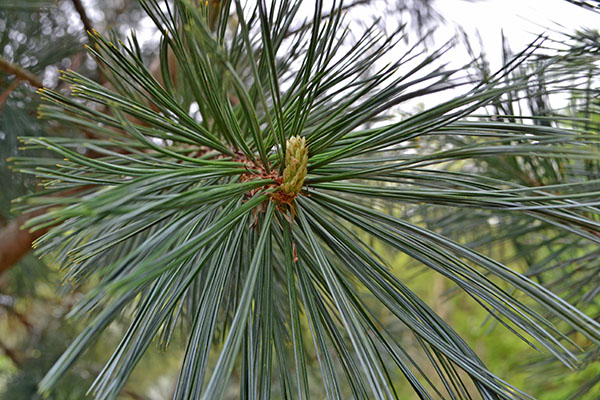Pinus densiflora
Japanese Red Pine
Japan, Korea, and parts of China
The trunks are frequently crooked or leaning, branches horizontally spreading and the crown is broad and flat; very irregular even in youth as it is an open, floppy grower.
Prefers well drained, slightly acid soil
2 needle pine of 40-60 feet in height and similar spread. Some trees will grow to 100 feet. Trunks are often crooked or leaning, branches horizontally spreading and the crown is rather broad to flat; very irregular shaped even in youth. Bark orange to orange red when yound, peeling in thin scales; in old age gray at the base, fissured into oblong plates. Needles are lustrous bright to dark green, slender, twisted, soft, 3-5" long, apex acute, margins finely toothed. They appear tufted and are borne somewhat upright along the stems. Needle sheath persistant. Cones sub-terminal, short stalked, solitary or in small clusters, conical-ovoid to oblong, 1 1/2-2" long, umbo obtuse or with a short spine, dull tawny yellow opening the second year and remaining on the tree 2-3 years. Used as a specimen tree becuse of it's unusual growth habit and ornamental bark. Often used for bonsai.
Lustrous bright to dark green
Buds are cylindrical, resinous, reddish brown, to .5 inches long.
Orangish to orangish red when young, peeling off in thin scales; in old age grayish at the base, fissured into oblong plates.
Monoecious.
Cones, dull tawny yellow, opening the second year and remaining 2 to 3 years on the tree.
Seed
'Oculus-Draconis' - Dragon's Eye Pine.
'Umbractilifera' - Table-Top Pine Bark






